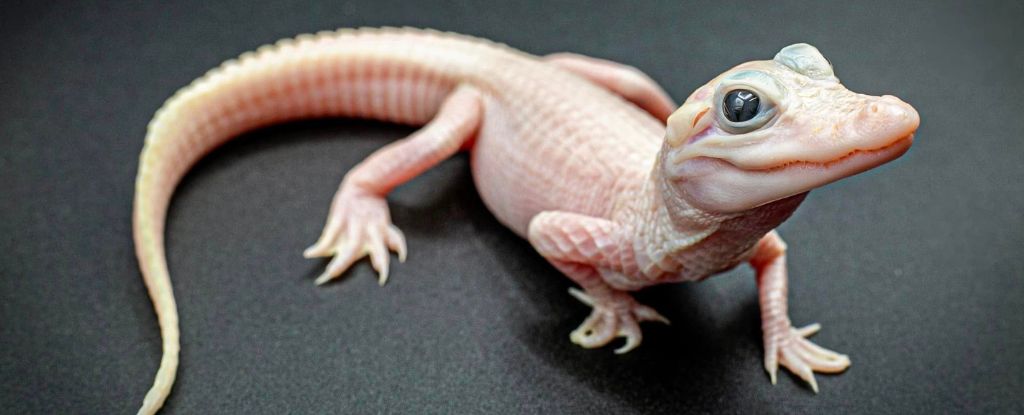An alligator amusement park near Orlando, Florida, fittingly called Gatorland, has announced its greatest new attraction: the ‘rarest alligator in the world’, a solid white hatchling with piercing crystal blue eyes.
The ghostly gator might look like an albino to the average tourist, but in reality, it is an even rarer form of reptile known as a leucistic alligator.
Unlike albinism, which is marked by a lack of the pigment melanin, leucism is caused by defects in specific pigment-producing cells.
This means that leucistic alligators are not pale yellow with pink eyes. They are more like reptilian White Walkers with the occasional patch of typical-colored scales here and there.
“For the first time since a nest of leucistic alligators was discovered in the swamps of Louisiana 36 years ago, we have the first birth of a solid white alligator ever recorded from those original alligators,” reads a press release from Gatorland on Facebook.
“This is beyond rare, it is absolutely extraordinary and the first one in the world.”
frameborder=”0″ allow=”accelerometer; autoplay; clipboard-write; encrypted-media; gyroscope; picture-in-picture; web-share” allowfullscreen>
Today, there are only seven known living leucistic alligators in the world, and Gatorland has three of them. To put that in perspective, there are between 100 and 200 known albino gators in the world.
The president and CEO of Gatorland, Mark McHugh, explained in a YouTube video with some ‘Florida flair’ how the world’s largest white gator breeding facility came to be.
In 2008, the Audubon Zoo in New Orleans offered Gatorland a few alligators that carried the genes for leucism.
One of these adopted gators, a male named Jeyan (who has since moved to the theme park Fun Spot), has scales that look like ‘white chocolate‘, and it carries both the dominant and recessive genes for leucism.
Another female gator, named Ashley, looks normal but was thought to secretly hold the recessive gene for leucism as well.
In August of this year, Ashley’s hidden genes were finally confirmed by breeders. Two eggs, laid by Ashley and fertilized by Jeyan, began to hatch, and, much to the excitement of park workers, one of the shells was pierced by a little white snout.
A Baby Leucistic Alligator has hatched at out at Gatorland & it is the first one in the world‼️ #alligator #leucisticalligator #whitealligator #rare #amazing #alligators #florida pic.twitter.com/oHn54xxQnR
— Gatorland Orlando (@Gatorland) December 7, 2023
The pocket-sized gator is a beautiful creamy white with eyes a cool blue. Next to the normal colors of the female gator’s brother, the sister looks downright dreamy.
Both siblings are in good health, according to officials at the park. They already weigh about 96 grams and are currently 49 centimeters long. They now live at Gatorland’s ‘White Gator Swamp’ – a shady spot that protects the leucistic individuals from the harsh rays of the Sun.
Similar to albino gators, leucistic gators can easily be burned by direct sunlight, and yet unlike albinism, leucism does not coincide with other genetic anomalies that cause deformities like spine curvature.
Leucistic gators are generally in good health and can live long and happy lives in captivity. In the wild, however, it is likely that such coloring makes it difficult to hunt and evade their own predators, according to experts at the Audubon Nature Institute in New Orleans.
“These are incredibly special animals in the reptile world, and we are being very careful with their safety and security,” wrote officials at Gatorland on Facebook.
“We plan to have them on display early next year so guests can see them, learn about them, and fall in love with them like we have.”
Gatorland is calling on the public to help name the two new gators. Already, there has been a frenzy of offers on social media, including Leucie and Rickie, Salt and Pepper, and Rice and Gumbo.





